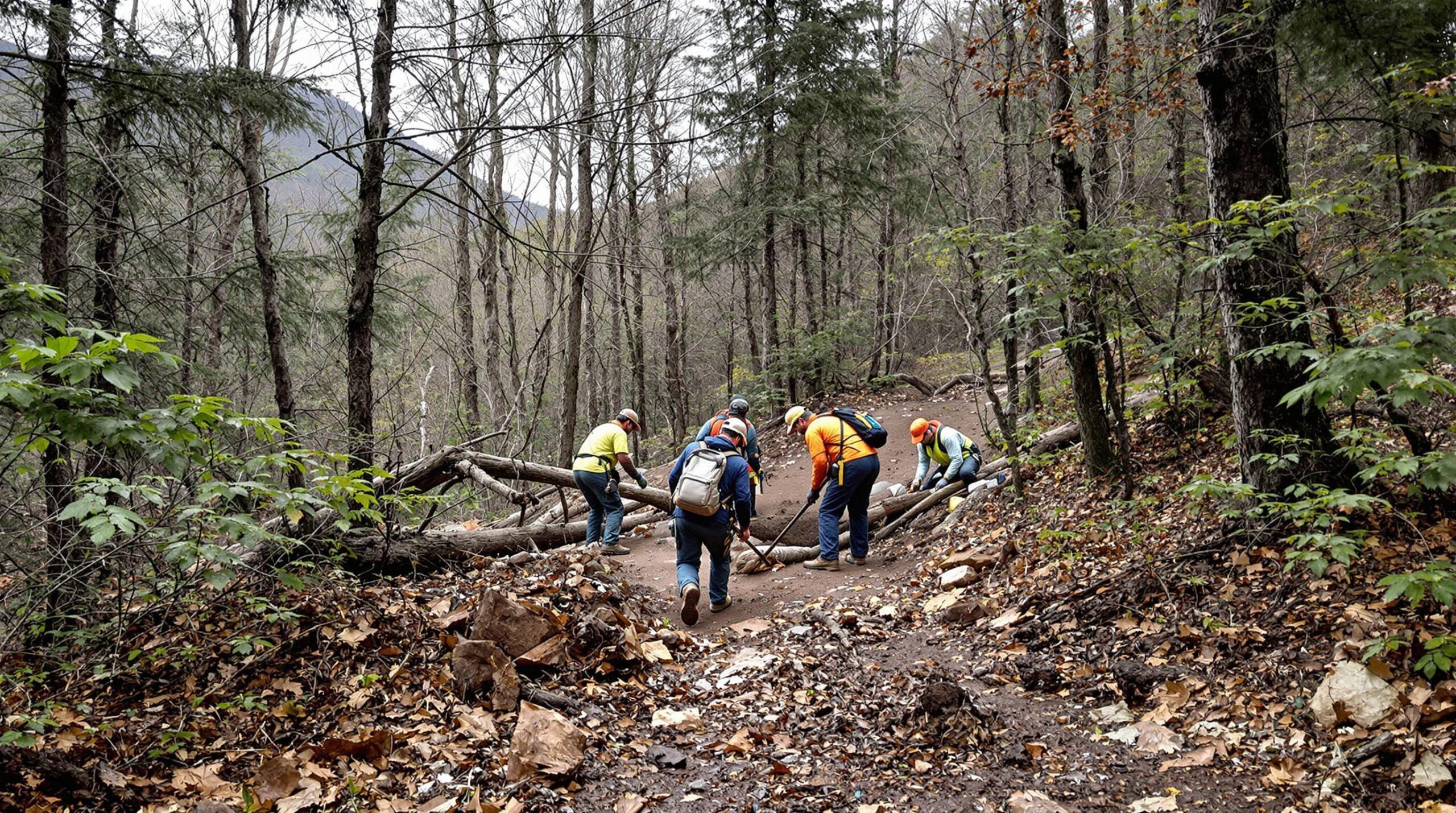A freeze on federal allocations has triggered new challenges along Wisconsin’s Ice Age National Scenic Trail. The footpath spans 1,200 miles across the state and includes about 16 miles within Devil’s Lake State Park, a region known for popular hiking and scenic views. Concerns have emerged about whether trail maintenance and educational programming can remain stable despite reduced funding support.
In this article, representatives of the Ice Age Trail Alliance report that about 10% of their annual budget relies on federal dollars. They warn that without that financial backing, they may struggle to keep up with storm cleanup, tool purchases, and essential training like chainsaw safety courses that help sustain the trail’s upkeep.
Officials within the alliance point out that severe weather events can quickly create overgrowth or fallen branches along the path. If resources are insufficient, non-cleared debris might lead to unsafe conditions and discourage visitors. The alliance states that annual visitation patterns in the area require consistent, proactive measures to ensure safety and accessibility.
A youth-focused initiative called “Think Outside,” which has traditionally introduced around 10,000 fourth graders to the Ice Age Trail, is also in jeopardy. Reduced funds could affect transportation, planning, and guided lesson components necessary to give students a hands-on educational experience. The alliance notes the importance of stable finances to sustain these longstanding excursions.
Another effort facing uncertainty involves a cultural storytelling podcast developed with members of the Ho-Chunk Nation. The broadcast project aims to highlight the longstanding ties Indigenous communities have to lands around Devil’s Lake. Planning and equipment costs reportedly became more difficult to manage under the current budget freeze.
The Ice Age Trail Alliance is exploring interim measures until potential legislative decisions restore some level of funding. Organizers emphasize that trail operations, volunteer coordination, and historical or cultural outreach efforts depend on a reliable flow of resources. Delays hamper pre-summer preparations and complicate planning for the busiest months.
General knowledge shows that structured volunteer programs with frequent recruitment and training can fill immediate labor gaps when external funding wanes. Conducting comprehensive sessions on chainsaw handling or debris removal helps maintain safe trail conditions. Coordinating with nearby campgrounds or supply stores relieves pressure on a single group by sharing tools, providing storage, and supporting safety equipment requirements.
Similarly, specialists recognize that installing interpretive signage at entry points or lodging areas can enhance visitor experience. Simple, concise messaging about the region’s ecology or geology fosters greater appreciation for the trail. When staff or federal funding is limited, a reliable network of digital tools, such as mobile apps with real-time trail updates, can also keep visitors informed and invested.
In addition to signage, guided hikes remain another way to educate the public. Organizers can plan short, theme-based walks—focusing on wildlife or geology, for example—that align with the alliance’s outreach goals. Those who manage local accommodations sometimes see opportunities in hosting small-scale educational sessions on-site, which complements the alliance’s broader objectives for youth and cultural programs.
The alliance is weighing similar approaches for Think Outside and cultural storytelling efforts. If campground managers or RV park operators provide meeting space or basic promotional assistance, it may preserve segments of the educational content while federal discussions continue. Such partnerships help mitigate immediate funding setbacks and strengthen ties with the larger outdoor recreation community.
Leaders within the organization encourage anyone who values the Ice Age Trail to stay informed about ongoing budget decisions and volunteer opportunities. They believe that combining grassroots support with renewed federal allocations can keep the popular 16-mile portion at Devil’s Lake State Park in good condition. Maintaining safe paths, enhancing community education, and preserving cultural initiatives remain top priorities.
Officials remain optimistic that upcoming legislative sessions will clarify whether federal funding streams can resume. In the meantime, the alliance asserts that collective action—coordinating various volunteer groups, embracing resource-sharing models, and reinforcing public outreach—will help safeguard the trail’s immediate operations and future prospects.


